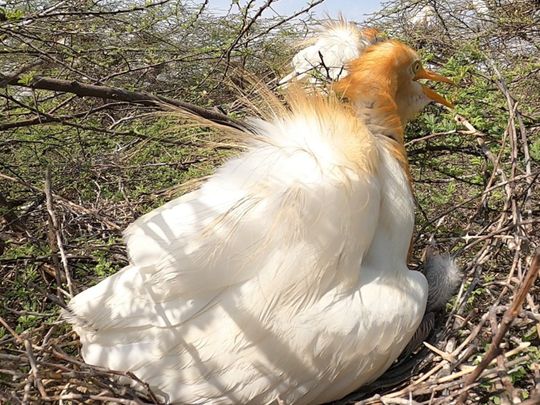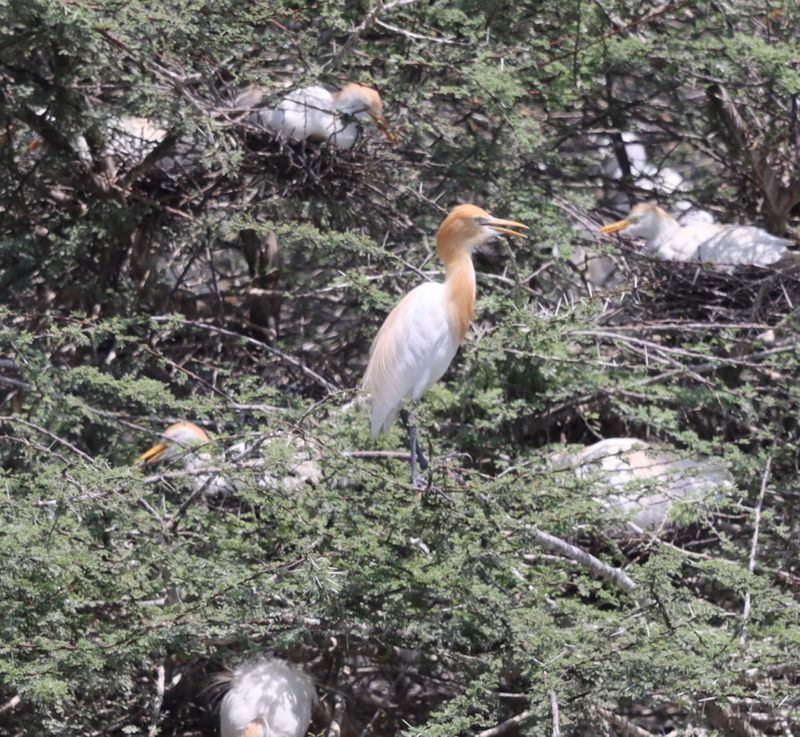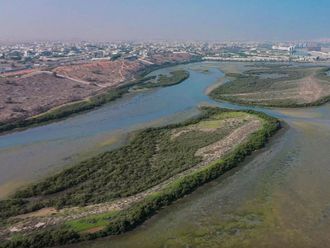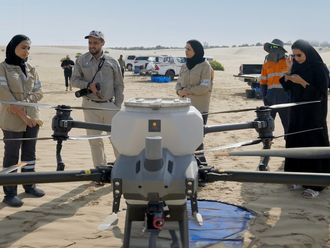
Dubai: UAE birders have recorded the first breeding of the Eastern Cattle Egret in the Al Marmoom Desert Conservation Area in Dubai.
“This is the first record of its breeding anywhere west of its current breeding range that ends in Pakistan. It usually ranges from New Zealand via Australia to South and East Asia,” Dr Reza Khan, Principal Wildlife Specialist, Dubai Safari Park, told Gulf News.
Dr Khan said the Cattle Egret, whether from Asia, Africa, Australia, America or Europe, belongs to the Bubulcus Ibis species. It has two sub-species: The Western and Eastern Cattle Egrets.
He said UAEBirding.com that keeps and updates all bird records in the UAE calls the Eastern Cattle Egret is a ‘vagrant’ to the country.

“A vagrant is a migrant that very rarely visits a country. The UAE birding community designates a species as a vagrant when its members are recorded on 20 or fewer occasions and less than annual in occurrence. Such species generally require substantiation on a Rare Bird Report form,” he explained.
Just last month, Gulf News had reported that the Pied Avocet, a unique wetland bird with an upturned bill, had also bred for the first time at the Marmoom Desert Conservation Reserve. Based on Dr Khan’s findings again,
Cattle Egret’s features
Cattle Egret is a pure white Egret with variations in bill and legs and has a decorative head, neck, throat and back feathers. “The western variety is small with a year-round yellow bill and facial skin, besides a white body. Legs could vary from grey blackish to yellow or reddish in the breeding season, when colour of the head, breast and back might turn deep buff or buffy orange with decorative back feathers,” he said.
In 2023, ornithologists split Cattle Egret into two species, rather elevating the formerly recognised two sub-species into two separate species based on their geographic ranges and some physical features and colour. The Western Cattle Egret has comparatively shorter tarsus or lower segment of the leg.
When seen on wings, its legs protrude far less beyond the tail tips than the Eastern one that has a longer tarsus. The head plummage or breeding gears are buffy in the Western Cattle Egret and is restricted to short projections over the head and traces on the neck. The back plumes project outside the tail feathers, said Dr Khan.
Compared to the western variety, the Eastern Cattle Egret has much gaudier nuptial dresses. The deep buffy head plummages cover the back of the neck and extend up to throat and breast. Even the back plumes are gaudier but a little shorter, he added.
He said it was in March this year that he first saw an Eastern Cattle Egret amid 400 Western Cattle Egrets breeding on an island in the lake within the Al Marmoom Desert Conservation Reserve in Dubai. The Cattle Egrets first started breeding here from March-April of 2020 during the time of COVID-19.
“By April this year, the Eastern Cattle Egret formed a pair with a Western Cattle Egret female and laid two eggs in a clutch. The chicks hatched as usual but got destroyed by the incessant rain. But soon after, I found two Eastern Cattle Egrets on the same heronry in Marmoom. By June, they started building a nest and laid eggs that hatched by the last week of the month. Of the chicks, one survived and will soon leave the nest," he said
"Incubation lasts for about 23 days when chicks leave the nest by a fortnight when they are still incapable of flight. By the end of the month of hatching chick becomes independent of the parents. So breeding of the Eastern Cattle Egret in Al Marmoom Desert in Dubai is the first record of its kind in the distribution of this egret from Pakistan East to India, Bangladesh and East Asia to Australia and New Zealand,” he concluded.












